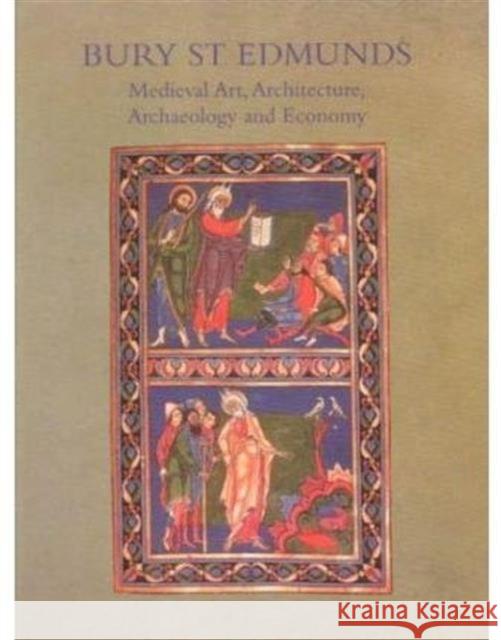Bury St. Edmunds: Medieval Art, Architecture, Archaeology and Economy » książka
Bury St. Edmunds: Medieval Art, Architecture, Archaeology and Economy
ISBN-13: 9780901286871 / Angielski / Twarda / 1998 / 384 str.
Bury St. Edmunds: Medieval Art, Architecture, Archaeology and Economy
ISBN-13: 9780901286871 / Angielski / Twarda / 1998 / 384 str.
(netto: 666,90 VAT: 5%)
Najniższa cena z 30 dni: 654,86 zł
ok. 16-18 dni roboczych.
Darmowa dostawa!
The abbey of Bury St. Edmund's was one of the richest and most powerful of the monasteries of medieval England. The Libert of the Eight and a Half Hundreds, over which the abbot exercised the authority of Sherriff, covered all west Suffolk and survived as a separate administrative district until the country reorganisation of 1974. As its centre was an even more privileged area, the town and suburbs of Bury St. Edmunds, which grew up to service the abbey's worldly needs and remained under the abbot's absolute control; today it survives as the prosperous borough of Bury St. Edmunds. The abbey church itself was larger than Durham cathedral and housed the shrine of St. Edmund, king and martyr, who had been killed by the Danes in 870 when they invaded East Anglia, and whose cult was the abbey's raison d'etre . In April 1994 the British Archaeological Association held a four day conference at Culford School, near Bury St. Edmunds, which was devoted to the study of the abbey and town. Most of the conference papers are printed in the preent Transactions, with the addition of three specially commissioned papers. They cover a wide range of subjects and break much new ground. There are papers on the abbey's architecture and on the layout of the medieval town, studies on St. Edmund's shrine, relics and cult, and on the abbey's administration and economic history, including papers on the mint, which the abbot administered, on the abbey's woodlands, and on its salterns in Lincolnshire. An especial feature of the volume are the papers on the abbey's manuscripts, comprising studies on their art, palaeography, and bindings, and on the monastic library. The volume ends with the catalogue prepared for the exhibitions held in Cambridge for delegates to the conference, of Bury manuscripts owned by a number of Cambridge colleges and by Cambridge University Library. In all, these transactions make an important contribution to the study of medieval Bury St. Edmunds and will no doubt stimulate further research.











